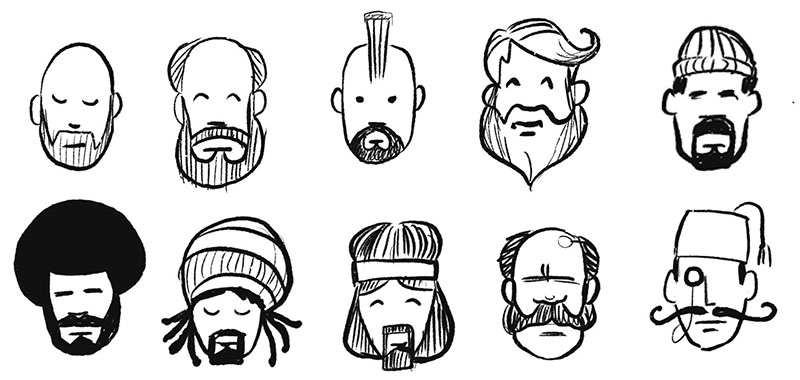Do you ever wonder why some figure drawings have a way of jumping out at you and grabbing your attention? By trying out these ideas in your sketching, yours can do that too.
Figures help your audience put themselves in the picture
Whether you draw for fun or for a living (or both!), and you want to liven up your work by making it more visually interesting (or both!) adding figures and faces to your communications makes a big impact. Our eyes can’t help but lock into the eyes of another face, or the pose of a figure. Why? To seek meaning and affinity. My own pet theory is that we are constantly looking to see something of ourselves, or to learn more about ourselves, whenever we look at art in general, and visuals in particular.
Or as George Bernard Shaw said:
You use a glass mirror to see your face; you use works of art to see your soul.
Figures can do the ‘heavy lifting’ for business audiences
You can also use this to great effect for visuals in business communication. Take a leaf out of the advertising playbook:
- Do you want to attract staff to be part of some change at work? Show figures thinking about and/or reaching the same goals that they have.
- Do you want to highlight a particular product/ service problem to stakeholders? Show people being impacted by that problem.
- Do you want to sell a benefit of a new product or process? Show people being happy when they use it.
In this way, visuals of figures are doing some of the cognitive ‘heavy lifting’; in other words, making it easier for the audience to relate to what’s being communicated, and understand what their response is.
Good news: you can draw figures and faces yourself, that can add a lot more life and impact to your communications at work, and it’s easier than you think. We’re not aiming for anatomically correct works of art here; we’re just aiming for the essence of a figure, or an expression.
In this post, I’m going to focus on figures, and show you 3 secrets to drawing more impactful figures.
1. Draw the body language
Most communication to each other we pick up on is non-verbal, and a big part of that is through body language. This differs depending on context, but essentially: what we say with our bodies matters. So, the poses of the figures you draw matters, too!
The pose of the figure you draw instantly tells a story about what they’re doing, and maybe how they feel about what they’re doing. People rarely just stand bolt upright not doing anything; showing them moving around, slouching, sitting, lying down, or doing various things adds so much more vitality.
Compare the pairs of figures below. Even though they’re really simple, the second figure of each pair communicates a lot more, doesn’t it? Your figures will have more character and appear more real (no matter how simple they are), which makes your message much more compelling to your viewers.
2. Draw people in their natural habitat
Just like how people rarely stand bolt upright not doing anything, people tend to exist in some kind of environment, rather than just in a void. Think about where your figure is, not only what they’re doing. Add a hint of background, something simple to indicate where they are, and perhaps even what time of the day it is. Add a hint of an accessory or something to add a bit more interest, too. When you use your imagination in your sketching in this way, you’ll ignite your viewers’ imaginations too, which will make your message more memorable.
3. Dial up the drama
Use a trick that cartoonists do, and try exaggerating the poses of your figures. This works really well when you want to cut through the noise of other communications, and imply more drama and urgency.
Try it yourself
So, there you go. I hope these examples inspire you to try adding figures to whatever your draw, and to add more character, nuance, movement and visual story to your figures.












